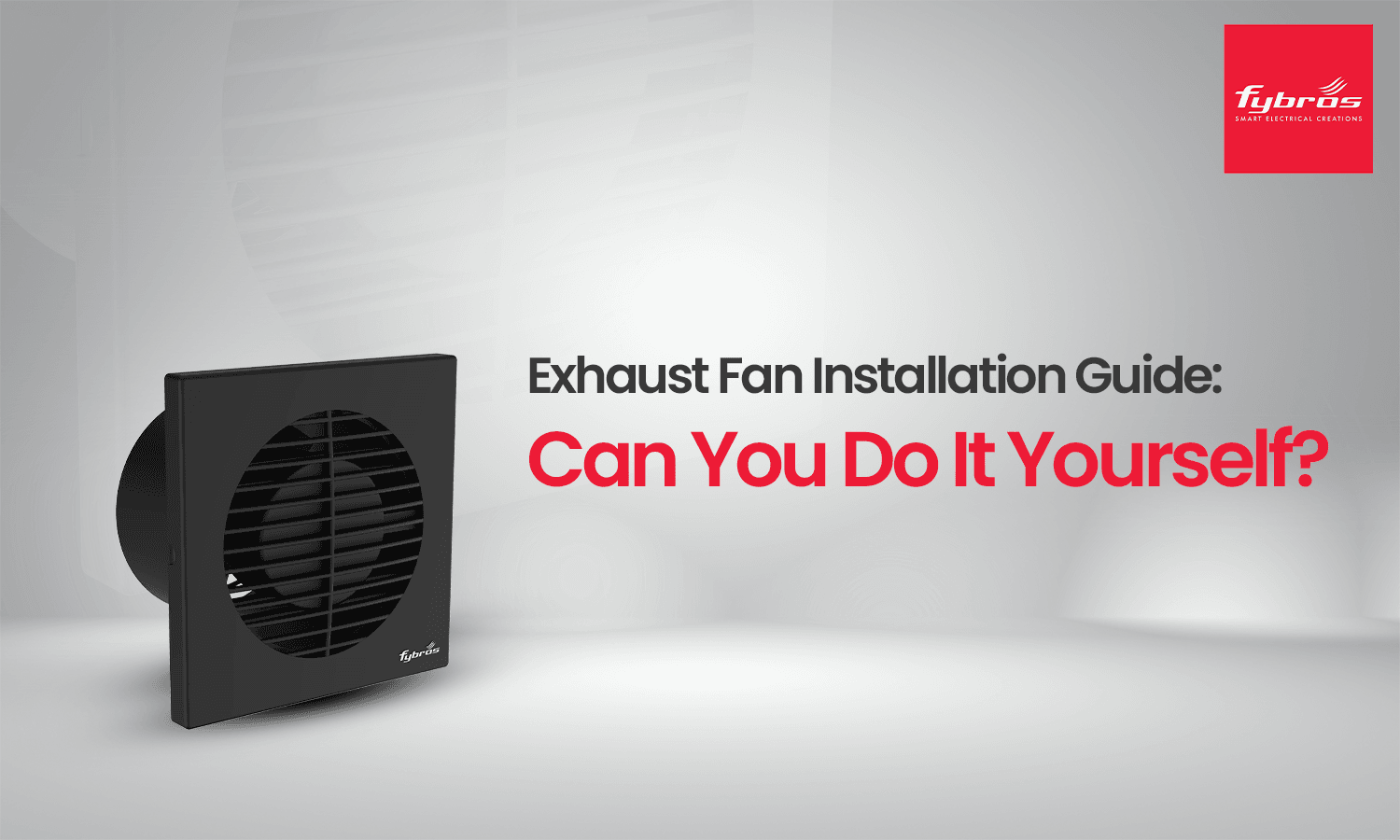
Proper exhaust fan installation is essential for maintaining clean air and preventing moisture buildup in homes. Whether it’s your kitchen, bathroom, or a false ceiling setup, installing a fan correctly ensures efficiency, safety, and longer life. But the question is, can you really do it yourself? Let’s find out how, along with some expert-backed tips from Fybros.
Yes, you can, but only if you have basic electrical knowledge and follow safety steps. DIY exhaust fan installation is possible for simple wall-mounted or window models. However, complex ceiling or ducted systems might need professional help.
Fybros offers easy-to-install models like the Lush Exhaust Fan (2200 RPM, 18 W) and Ventflo Exhaust Fan (1350 RPM, 35 W), both designed for quick wall and ceiling mounting without heavy wiring.
Before starting, make sure you have:
A power drill and screwdriver
Measuring tape
Wall cutter or jigsaw (for creating fan openings)
Insulated wire connectors
Mounting screws
Sealant for air gaps
You’ll also need the fan size details, usually 150 mm for small bathrooms and 200–250 mm for kitchens. Refer to the exhaust fan size chart on the Fybros website before you buy.

Here’s a simple exhaust fan installation guide you can follow:
Mark the spot: Choose a high position on the wall or window, close to the ceiling.
Cut the hole: Using the fan’s template, mark and cut the opening according to its size.
Mount the fan: Secure it using screws through the mounting holes.
Wire the connection: Connect the live and neutral wires carefully.
Seal the edges: Apply sealant to prevent air leakage.
Test the fan: Turn on the switch to ensure proper airflow direction.
The Ventflo and Exflo Plus models from Fybros are engineered for easy, stable installation with pre-aligned mounting slots.
For false ceiling exhaust fan installation, always ensure ducting access for ventilation. These fans are placed above the ceiling grid and connected via ducts to an outer wall or roof vent.
Fybros recommends using low-noise, energy-efficient options like Venti Air Exhaust Fan (1350 RPM, 35 W), which offers smooth operation and minimal vibration—perfect for concealed or suspended ceilings.
A proper bathroom exhaust fan installation prevents mold, odor, and dampness. Position the fan opposite the door or window for maximum airflow.
Models like Lush Exhaust Fan (100 mm) are perfect for compact bathrooms, while Venti Air (200 mm) suits larger spaces.
If you’re unsure how to install an exhaust fan in the wall, always check for wiring points before cutting or drilling.

When performing kitchen exhaust fan installation, place the fan near your cooking area but away from direct flame. Use a small exhaust fan for the kitchen if space is limited, Fybros’ Exflo Plus 150 mm provides 350 CMM airflow, ideal for eliminating smoke and grease.
If you’re calculating the exhaust fan size for a kitchen, consider at least 10 air changes per hour for effective ventilation.
If wiring looks complicated, or you’re unsure about the circuit load, it’s safer to call a certified technician. Professional electricians ensure your bathroom fan installation and kitchen exhaust fan installation meet safety standards and proper ventilation requirements.
For false ceiling exhaust fan installation, duct alignment, and insulation also require expert handling.
Maintenance After Exhaust Fan Installation
After installing your fan, clean it every three months to avoid dust buildup and motor strain.
Check the screws, wiring, and grills regularly for damage. Fybros exhaust fans come with durable ABS bodies and rust-free blades, making long-term maintenance simple.
1. How Do I Choose a Good Exhaust Fan?
Pick one based on room size, RPM, and airflow. For small bathrooms, 100–150 mm fans like Fybros Lush are ideal; for kitchens, choose 200 mm models like Exflo Plus.
2. Do Exhaust Fans Need Ducting?
Yes, especially for false ceiling or roof-mounted fans. Ducts ensure air is expelled outdoors.
3. Can I Install a Bathroom Exhaust Fan Myself?
Yes, if wiring is pre-set. Just follow this bathroom exhaust fan installation guide and ensure safety precautions.
4. How Much Does It Cost to Install an Exhaust Fan?
The cost to install a bathroom fan or a kitchen unit ranges between ₹800–₹1,500, depending on wiring and wall type.
5. Do I Need an Electrician to Install an Exhaust Fan?
For ceiling or duct-based systems, yes. For basic wall-mounted or window fans, DIY installation is usually sufficient.
Proper exhaust fan installation isn’t just about fitting a fan; it’s about ensuring long-term ventilation, safety, and air quality. With easy-to-install models like Fybros Ventflo, Lush, and Exflo Plus, even a DIY approach can deliver professional results.